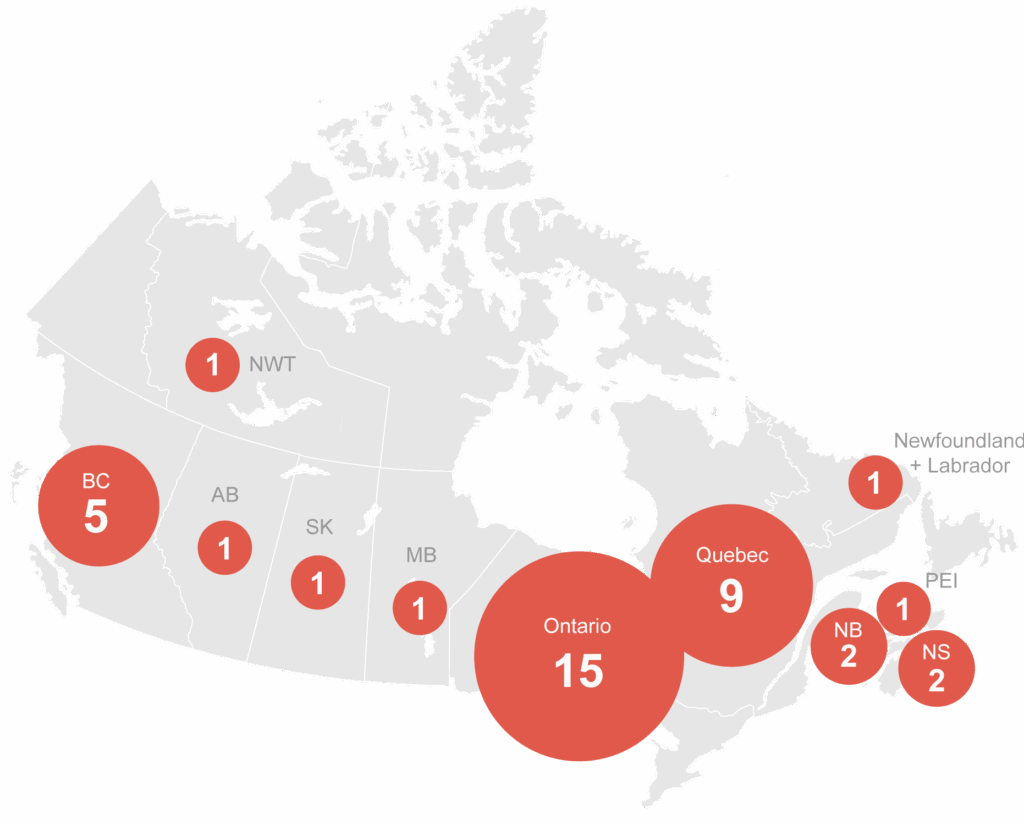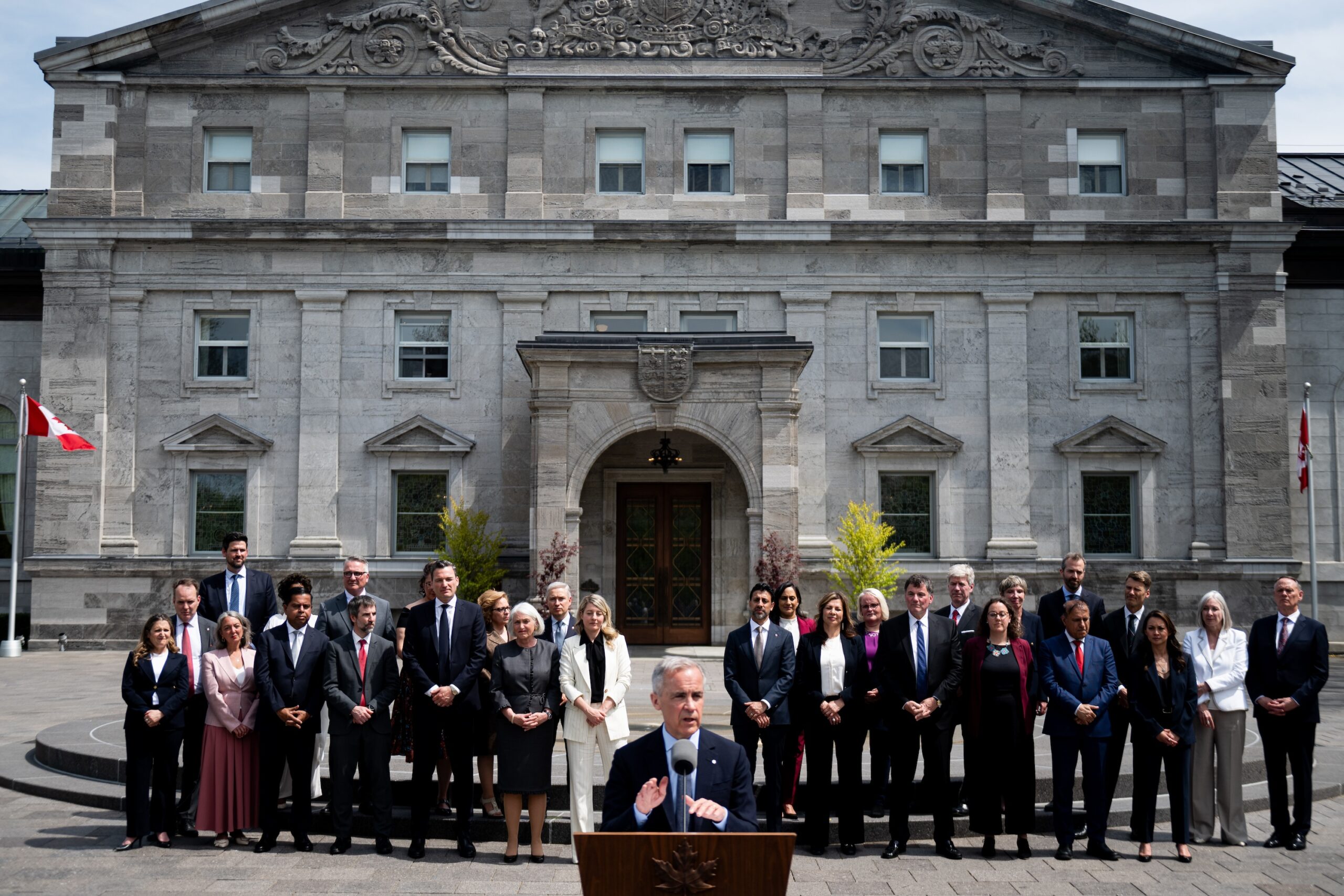On Tuesday morning, Prime Minister Mark Carney swore in his second official cabinet, but the truly first of his own choosing. The Prime Minister announced 24 new members of cabinet, including 13 rookie MPs.
Today’s cabinet swearing in illustrates the constraints and opportunities available to the Prime Minister in forming his government. Mr. Carney included many new faces who were recently elected, meeting the political optics of change, elevating 13 newly elected MPs to the ministry and dropping 10 existing ministers including long time ministers such as Bill Blair and Jonathan Wilkinson. Much of the churn involves lower profile individuals and less central ministries.
To that end, Mr. Carney returned the government to a two-tiered ministerial system, which is not uncommon in the Canadian Parliamentary system and has been used by several earlier governments at various times during their tenure. The 10 Secretaries of State appointed today are distinct positions separate from parliamentary secretaries, whose work is directed more by the ministers they are assigned to and includes standing in for them in the House of Commons and other portfolio-related duties. Ministers of State are also sworn in as privy councillors, while parliamentary secretaries are not. Secretaries of State will not manage federal departments or attend all cabinet meetings; they have instead been assigned specific policy priorities for the Liberal government to help drive and manage progress in these areas. Some have titles that are more communications driven than substantive, such as “combatting crime”.
These changes send a signal of continuity and a recognition of institutional memory by reappointing an inner core of Trudeau era ministers although many of them are assigned to new portfolios. Dominic Leblanc emerges as the most influential minister, illustrated by his being the first to be sworn in and leading in the fraught areas of Canada-U.S. trade and intergovernmental relations. Francois-Phillippe Champagne holds onto Finance and is joined in overall economic management by Melanie Jolie at Industry (though importantly science and innovation are no longer part of the title while AI and digital transformation take centre stage with their own minister) and by newcomer Tim Hodgson at the politically sensitive energy and natural resources.
Of note, with the exception of Patty Hajdu at Jobs and Families, social policy ministries are not led by high profile veterans or appear to be rated as high priorities for the government. Additionally, there is no minister named as responsible for people with disabilities, which will spark some criticism within the community.
Perhaps surprisingly, the PM had recruited several skilled business leaders to run but most did not make the cut.
Prime Minister Carney’s core cabinet maintains gender parity, with 14 of each gender, not including the Prime Minister. While the Secretaries of State are made up of six men and four women. In general, these appointments also meet the imperatives of geographic representation, which looks like this:

There is also a whiff of minority government politics – rewards to Liberal political operatives, such as Marjorie Michel, John Zerucelli and Anna Gainey – as well as MPs who provided early support for Carney’s leadership. Sean Fraser and Anita Anand were both rewarded for reversing their decisions not to run again as statements of non-confidence in Justin Trudeau, as was Chrystia Freeland who set off the rebellion against Mr. Trudeau.
Mr. Carney enters the role of Prime Minister with the most economic credibility in modern history, and this will unavoidably impact his role as the head of government. In many cases, he will likely act as his own primary source of influence when making larger directional decisions, whereas in a traditional setting the Prime Minister may take direction from his finance minister. While Finance remains one of the top posts in government, Carney’s own language up to this point indicates that he will be a very hands-on prime minister likely in both the finance and foreign affairs areas.
In putting together today’s cabinet, the Prime Minister faced the urgent challenge of trying to distinguish his government from the previous one, which was part of the reason Canadians gave him a strong minority mandate. However, after today and a seemingly tame set of changes, it remains unclear whether Mr. Carney will successfully put to bed the links to the Trudeau government and baggage of a fourth Liberal government.
What is next?
There is still much to come in the emerging definition of the Carney government. The Speech from the Throne will flesh out the core priorities in more detail. Mandate letters, if made public, will lay out the scope of initiatives expected from Ministers. The decision whether to have a full budget after the House resumes will actually set the work plan unless the government is content to pass supply and wait on a budget or fiscal and monetary update in the fall. The Prime Minister also still needs to make a number of high-level decisions about senior advisors in his own office before PMO can begin the process of staffing the rest of government.
The House of Commons is scheduled to resume sitting the week of May 26 for a four-week period, just 28 days after Canadians voted in the federal election, the second-shortest time on record after the 21-day wait following the 1988 federal election. With three electoral recounts underway—or preparing to get underway, and only one of these seats not being held by a Liberal candidate—the path to a majority is unlikely through this process.
Although the overall economic thrust of the government is in building resilience and diversification, the reality for the PM is that two of the larger forces shaping his mandate are outside the normal daily ambit of Parliament – trade relations with the U.S. and dealing with the provinces. Both are largely the purview of the PM himself not the cabinet announced today who will play supportive not central roles.
Cabinet overview
(* Represents a newly elected MP)
New Cabinet Ministers
- Marjorie Michel* – Minister of Health
- Maninder Sidhu – Minister of International Trade
- Heath MacDonald – Minister of Agriculture and Agri-Food
- Gregor Robertson* – Minister of Housing and Infrastructure, and Minister responsible for Pacific Economic Development Canada
- Tim Hodgson* – Minister of Energy and Natural Resources
- Shafqat Ali – President of the Treasury Board
- Joel Lightbound – Minister of Government Transformation, Public Works and Procurement
- Jill McKnight* – Minister of Veterans Affairs and Associate Minister of National Defence
- Evan Solomon* – Minister of Artificial Intelligence and Digital Innovation, Minister responsible for the Federal Economic Development Agency for Southern Ontario
- Eleanor Olszewski* – Minister of Emergency Management and Community Resilience and Minister responsible for Prairies Economic Development Canada
- Rebecca Alty* – Minister of Crown-Indigenous Relations
- Mandy Gull-Masty* – Minister of Indigenous Services
- Rebecca Chartrand* – Minister of Northern and Arctic Affairs and Minister responsible for the Canadian Northern Economics Development Agency
Returning Cabinet Ministers
- Francois Philippe Champagne – Minister of Finance and National Revenue
- Sean Fraser – Minister of Justice and Attorney General of Canada, and Minister responsible for the Atlantic Canada Opportunities Agency
- Melanie Joly – Minister of Industry and Minister responsible for Canada Economic Development for Quebec Regions
- Steven MacKinnon – Leader of the Government in the House of Commons
- Dominic LeBlanc – President of the King’s Privy Council for Canada and Minister responsible for Canada-U.S. Trade, Intergovernmental Affairs and One Canadian Economy
- David McGuinty – Minister of National Defence
- Anita Anand – Minister of Foreign Affairs
- Lena Diab Metlage – Minister of Immigration, Refugees and Citizenship
- Julie Dabrusin – Minister of Environment and Climate Change
- Joanne Thomspon – Minister of Fisheries
- Gary Anandasangaree – Minister of Public Safety
- Patricia Hajdu – Minister of Jobs and Families, and Minister responsible for the Federal Economic Development Agency for Northern Ontario
- Rechie Valdez becomes Minister of Women and Gender Equality, Secretary of State for Small Business and Tourism
- Steven Guilbeault remains Minister of Canadian Identity and Culture and Minister responsible for Official Languages
- Chrystia Freeland remains Minister of Transport and Internal Trade
Ministers of State
- Buckley Belanger* – Secretary of State for Rural Development
- Stephen Fuhr* – Secretary of State for Defence Procurement
- Anna Gainey – Secretary of State for Children and Youth
- Wayne Long – Secretary of State for the Canada Revenue Agency and Financial Institutions
- Stephanie McLean* – Secretary of State for Seniors
- Nathalie Provost* – Secretary of State for Nature
- Ruby Sahota – Secretary of State for Combating Crime
- Randeep Sarai – Secretary of State for International Development
- Adam van Koeverden – Secretary of State for Sport
- John Zerucelli* – Secretary of State for Labour
No longer in cabinet
- Jonathan Wilkinson was previously minister of natural resources
- Kody Blois was previously Minister of Agriculture and Agri-Food
- Ginette Petipas Taylor was President of the Treasury Board
- Kamal Khera was Minister of Health
- Terry Duguid was Minister of Environment and Climate Change
- Nate Erskine-Smith was Minister of Housing, Infrastructure and Communities
- Rachel Bendayan was Minister of Immigration, Refugees and Citizenships
- Arielle Kayabaga was Leader of the Government in the House of Commons and Minister of Democratic Institutions
- Ali Ehsassi was Minister of Government Transportation, Public Services and Procurement
- Elisabeth Briere was Minister of Veteran Affairs and Minister responsible for the Canada Revenue Agency
- Bill Blair was the Minister of National Defence.
